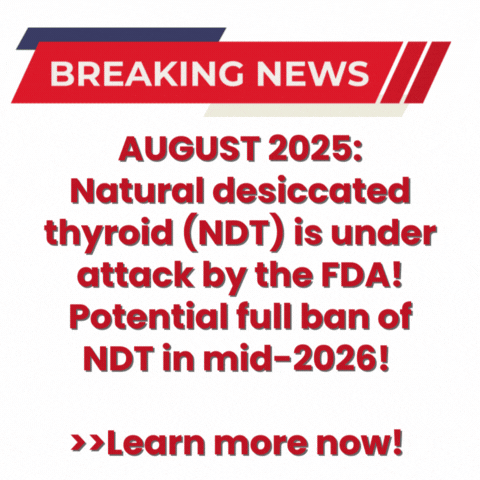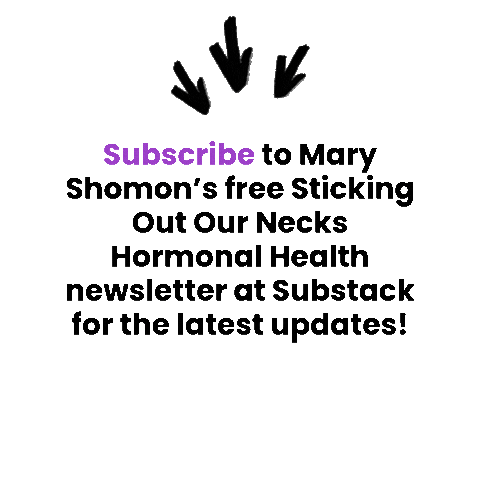
A Brief History of Natural Desiccated Thyroid
Prior to 1891: Before a treatment was discovered and became routine, hypothyroidism could progress to severe myxedema: advanced hypothyroidism characterized by swelling, depressed breathing and low oxygen levels, mental slowness, and seizures.
Myxedema was usually fatal, typically taking about 10 years from the diagnosis of myxedema to coma, and eventually, death from respiratory and heart failure.
1891: The first use of a thyroid extract -- derived from the thyroid glands of sheep -- was reported in the UK by Dr. George Redmayne Murray. Initially, thyroid extract was used for severe myxedema.

Dr. George Redmayne Murray
1891: First recorded use of thyroid extract in the US. Thyroid extract was not a mass produced drug. Instead, it was produced by apothecaries -- also known as chemists or druggists -- who custom-prepared medications.
1890s to 1930s: use of thyroid extract to treat hypothyroidism became widespread in Europe and the United States.
Early 1900s: The Armour Meat Packing company made Armour Thyroid available to apothecaries as an ingredient for thyroid extract.
1920: Dr. George Redmayne Murray published a description of a patient successfully treated for almost 30 years with thyroid extract.
1934: Western Research Laboratories was founded by Dr. William McClymonds to manufacture and distribute the first commercially-prepared and distributed natural desiccated thyroid drug, called Westhroid.
1938: The new federal Food, Drug and Cosmetic Act gave the Food and Drug Administration (FDA) oversight over various medications, and established formalized approval processes. As an existing medication, natural desiccated thyroid was “grandfathered,” and not required to go through any approvals.
1949: Levothyroxine (synthetic thyroxine) became commercially available. New drug application and approval was not required by the FDA at that time.
1960s – 1990s: Levothyroxine increasingly replaced the use of natural desiccated thyroid in the UK and US.
1966: A peak of 16.6 million prescriptions filled for NDT
1970: Armour and Company acquired by bus company Greyhound Corporation.
1978: Greyhound sold Armour (Pharmaceuticals division) to Revlon.
1981: Dennis Jones/Jones Medical Industries (JMI) acquired Western Research Laboratories from the McClymonds family.
1982: Nature-Throid -- a hypoallergenic version of Westhroid -- was released by Western Research.
1985: Revlon sold its drug unit – including Armour Thyroid -- in 1985 to Rorer (later known as Rhône-Poulenc Rorer).
1988: 4.5 million prescriptions filled for NDT -- Armour Thyroid, Westhroid, and Nature-Throid.
1990 - 1997: The FDA reported 10 recalls of levothyroxine, covering 150 different lots of medication, and a total of 100 million tablets.
1991: Forest Laboratories acquired the rights to Armour Thyroid from Rhône-Poulenc Rorer

1997: With 37 different manufacturers and repackagers of levothyroxine on the market, and widespread and ongoing problems with content uniformity, sub-potency, and stability, the FDA launched an effort to standardize levothyroxine sodium tablets, and to minimize potency fluctuations. As a result, the FDA declared levothyroxine sodium tablets a “new drug,” and required new drug applications for approval of all levothyroxine drugs. (NDT was not included in this FDA ruling, and remained grandfathered.)
1998: Western Research Laboratories was acquired by the Cox family: Rick, Judy, Lindsay and Riki Cox.
1999 – 2001: Several companies submitted NDAs for levothyroxine, and the first product (Unithroid) was approved in August of 2000. Synthroid filed a citizen's petition to bypass the NDA process, but that was rejected by the FDA, and an NDA was ultimately filed for Synthroid.
2006: The name of Western Research Laboratories was changed to RLC Laboratories.
2013: A major study from Walter Reed National Military Medical Center found that 49% of patients preferred natural desiccated thyroid, compared to 18% who preferred levothyroxine -- 33% had no preference. That study also found that patients who preferred natural desiccated thyroid had improved general well-being, and significantly improvement in thyroid symptoms, and lost approximately 4 pounds, compared to no weight loss or improvements in well-being and symptoms in the levothyroxine group.
2013: Acella introduced NP Thyroid as a generic natural desiccated thyroid drug.
2013: WP Thyroid released.
2014: A study published in the Journal of Endocrinology, Diabetes & Obesity found that among patients who didn’t feel well on levothyroxine, 78% who switched to natural desiccated thyroid said they preferred it.
2014-2015: Armour Thyroid became an Allergan product with the merger of Forest Laboratories into Allergan in 2014-2015.
2017: Natural desiccated thyroid was the 130th most prescribed medication in the United States with around 5.5 million prescriptions per year (levothyroxine was the 3rd most prescribed drug, with almost 102 million prescriptions and refills).
2018: An American Thyroid Association survey of more than 12,000 people with hypothyroidism found that about 30% of patients take natural desiccated thyroid. The same survey found that patients had a higher level of satisfaction taking natural desiccated thyroid compared to levothyroxine.
2020: Pharmaceutical company AbbVie acquires Allergan, including Armour Thyroid.
Today: The following are the natural desiccated thyroid drugs available in the United States







